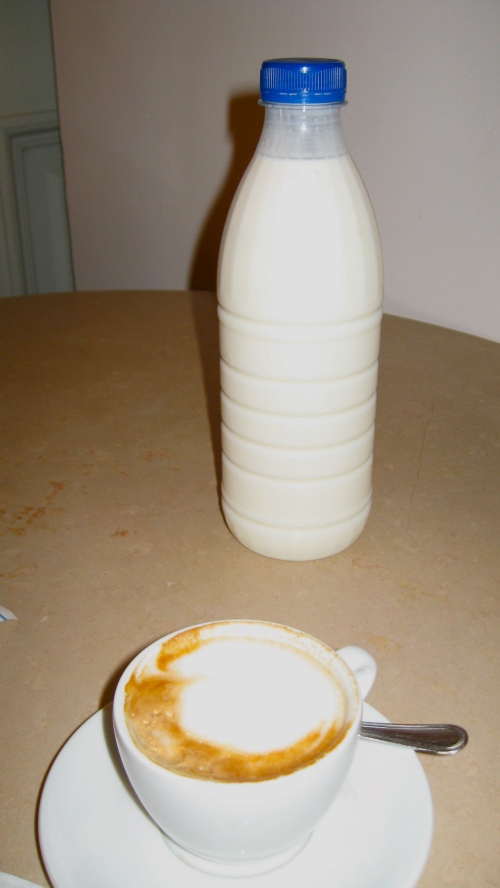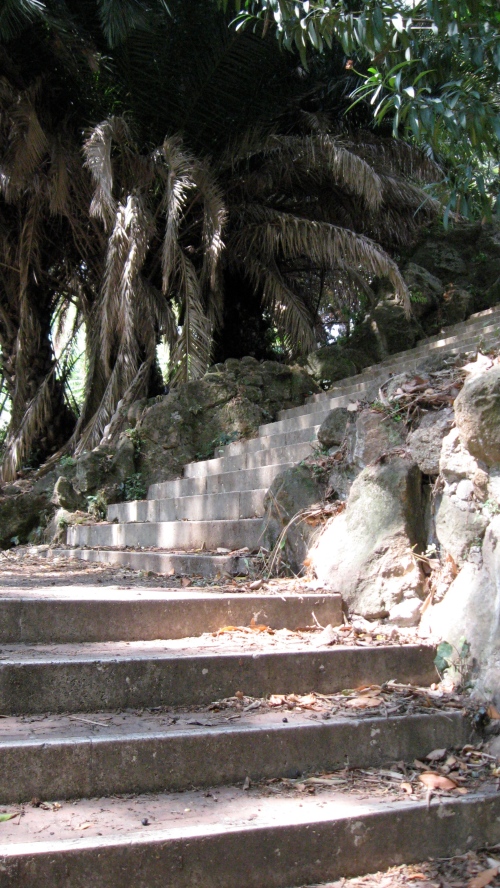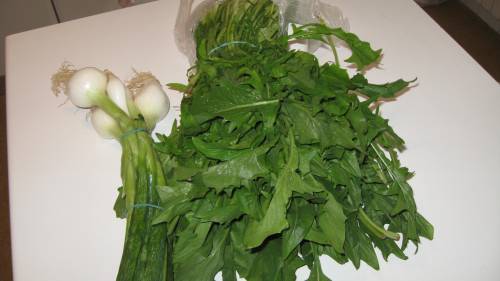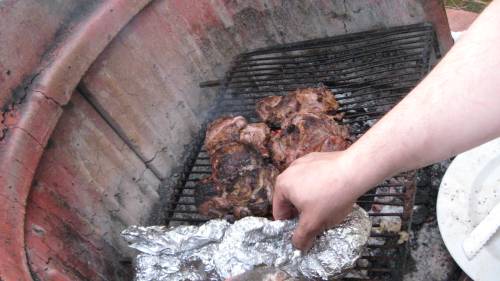This past Saturday, we hosted our first dinner party here at our Rome apartment. The guests were six parents and five children under age six. It was a swirling whirl of activity, with chair and table shortages, and yet we broke only one wine glass.
I had planned the menu around several types of abundance and constraint: the produce that is in season at the markets, the number of guests who were omnivores, vegetarians, or plain-pasta-preferring children, and the odd assortment of cookery tools available to me in this lightly furnished apartment. Planning a meal like this has something in common with other types of composition—blank verse or water color, perhaps—in which there are particular forms and materials available, with particular possibilities and limitations.
Is this too cerebral an introduction to something as sensuous as a good meal? The pleasures in cooking go both ways for me. But let’s get down to what we had.
Id’ been wanting to cook that Roman cauliflower cousin, variously named broccoflower and broccolo romanesca. I decided it in the meal for its strange, fractal, architectural beauty.

I had bunches of carrots, which I decided to braise:

I’d also been passing “the funghi guy” with his mini-truck full of chanterelles and porcini, every day. The meal would have to include these things.

The menu came together, with a few more shopping trips:
For snacking and sipping, we had the following: wine-brined black olives, Jeannie’s treats—mozzarella wrapped in prosciutto on toothpicks with prugne (yes, prunes, or, dried plums, if you prefer)—and a deliciously crisp local organic white wine that Marjorie brought.
Next, came the kids’ meal: pasta with red sauce. Really, why fancy it up with any other name? They did have freshly grated parmigiano-reggiano, those lucky little blondies. (Don’t worry—they’re drinking water, not that prosecco, which we drank):

After clearing the kids’ dishes, I served up the main meal: chicken legs braised in Sardinian white wine with porcini, polenta, braised carrots tossed with parm, and broccolo romanesco roasted with bread crumbs and fennel. The only contorni (vegetable side dish) I managed to photograph was the cauliflower. (It was delicious! I had some for lunch today, with some of the leftover chicken. Maybe even better as a leftover.)

There were so many conversations going on, many of which I barely dipped into, because I was busy talking with Jeannie and Marjorie about food and Rome. Both of these new friends are passionate devotees of good, whole, local, organic food. Jeannie is a journalist currently working on a book about food, and Marjorie owns a tourism business—called Insider’s Italy—that focuses on sustainable travel and food-related adventures in Italy. Her newly created trip, “Farm to Fork,” is absolutely inspired. Not only does the tour take families to the best markets in Rome for sustainably produced Italian specialties, but it also takes them back in history to the Roman markets of 2000 years ago, and is carbon-conscientious. (You must check out their website.)
We had set the kids up with a movie, before we started eating. They entered an instant collective trance:

We grown-ups were happily eating and talking, and almost didn’t notice that the silence behind the closed bedroom door had ballooned into a hurricane level of noise. Uh oh.
Cookie time. I’d bought thirty of those chewy/crunchy amaretti from the bread place on Quattro Venti. It was a fun night.
Roasted Broccolo Romanesca
2 heads broccolo romanesca, broken into its “trees”
3 cloves garlic, smashed
2 shallots, broken up
assorted dried or fresh herbs
1 fennel bulb, sliced
home-made rough-crushed breadcrumbs
plenty of olive oil, salt, and pepper
Combine these ingredients—reserving the breadcrumbs until later—on a pan. Roast in a preheated oven (400-450) for 15-20 minutes. Sprinkle with the olive-oil tossed breadcrumbs, and roast for another 10-15 minutes. Serve warm or room temp.
Braised Carrots
based on Marcella Hazan’s recipe
8-10 large carrots
salt & pepper
1 tbs. sugar
2 tbs. butter
1/2 c. grated parmigiano-reggiano
Slice carrots into thin discs and spread in an even layer in your largest skillet. Just cover with water, sprinkle in the salt, pepper, sugar, and butter. Bring to a boil, then simmer until the carrots are wrinkly and almost browning. If the water runs out, add a bit more, tiny bit by tiny bit. Take off the heat and stir in the parm. Serve immediately.
Chicken Legs Braised with Porcini
4-6 chicken legs
plenty of stock and white wine
3 garlic cloves
3 shallots
dried or fresh porcini
dried or fresh thyme
butter & olive oil
Brown the chicken legs in butter and olive oil over moderate heat until skin is crispy on both sides. Add the smashed garlic and sliced shallot to the pan to brown a bit. Pour in a combination of half wine/half stock just to cover the chicken. Add porcini and thyme, salt and pepper. Simmer for 30-45 minutes, until chicken is tender and almost falling off the bone. If you want to, reduce some of the braising liquid with some butter for a richer sauce.
















 Inside, a curved bank of display counters embraces the gaggle of customers pointing high and low to the breads and pastries they want.
Inside, a curved bank of display counters embraces the gaggle of customers pointing high and low to the breads and pastries they want.


























